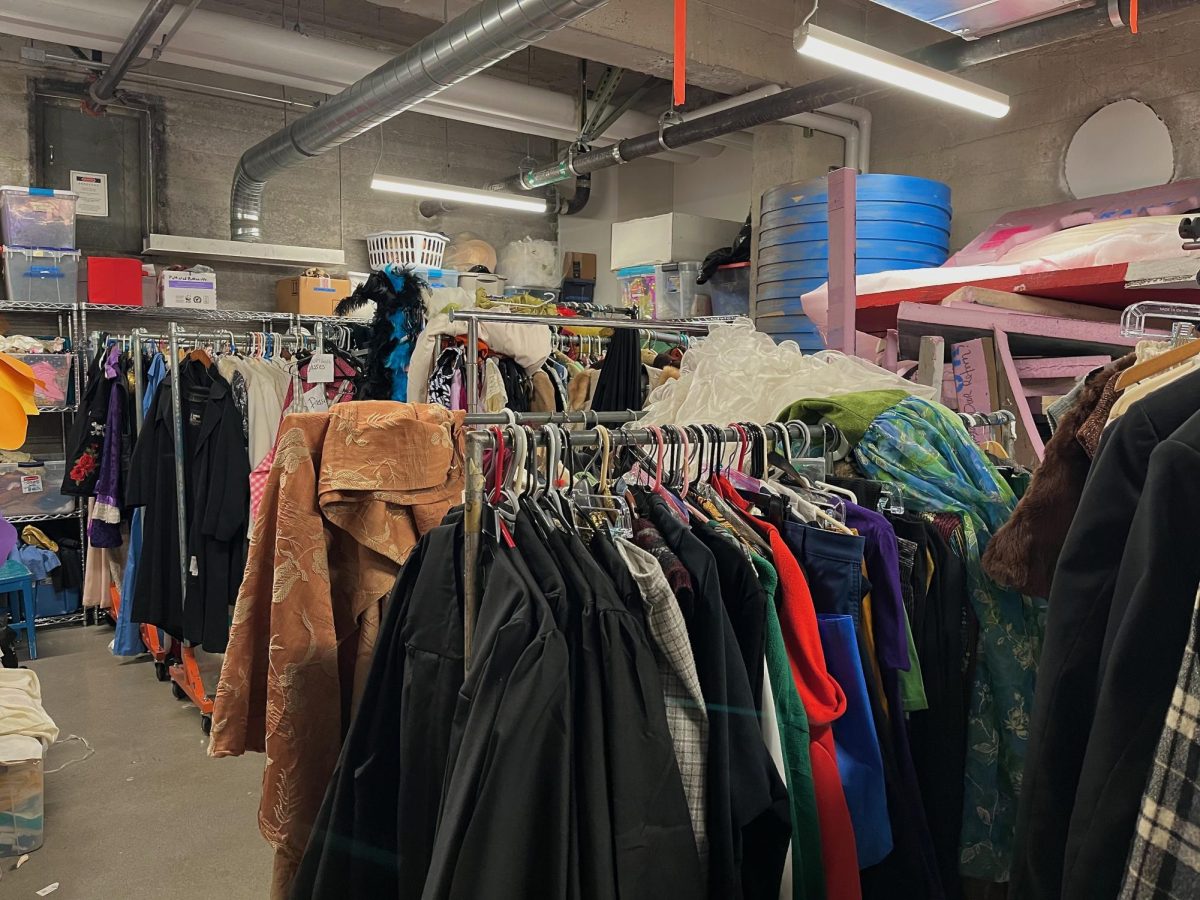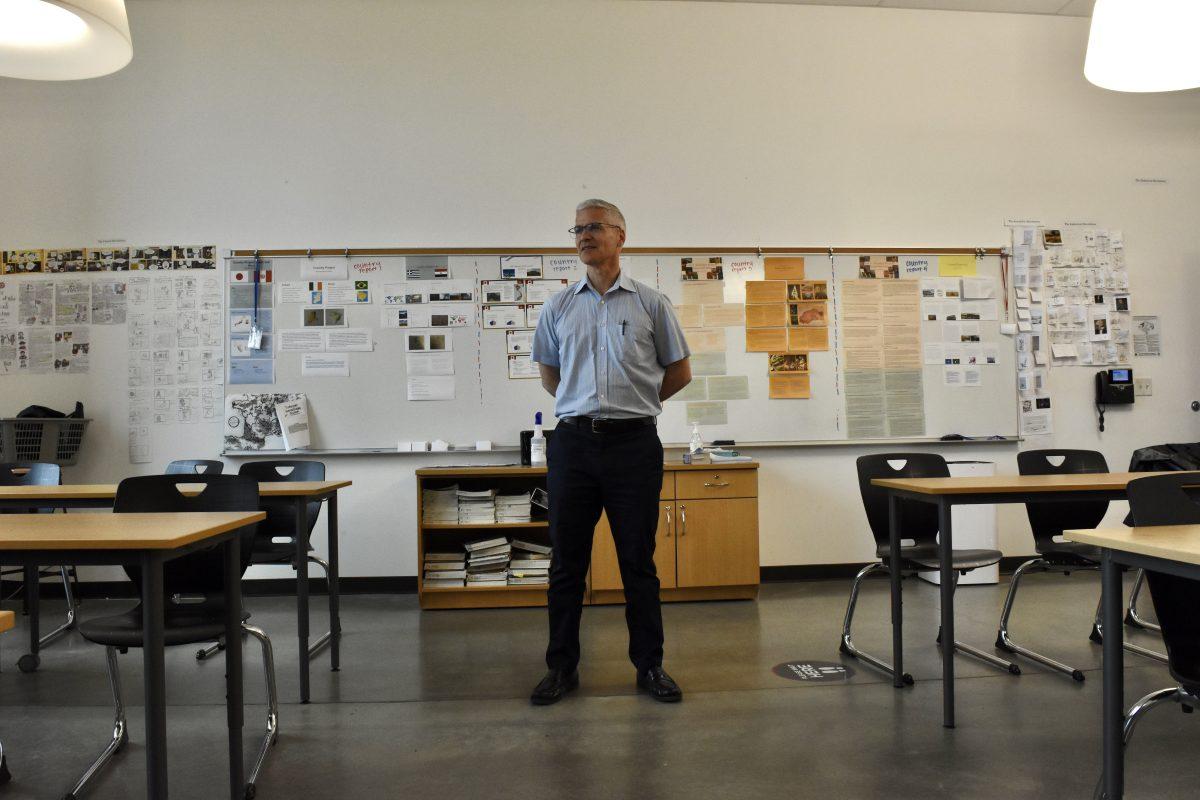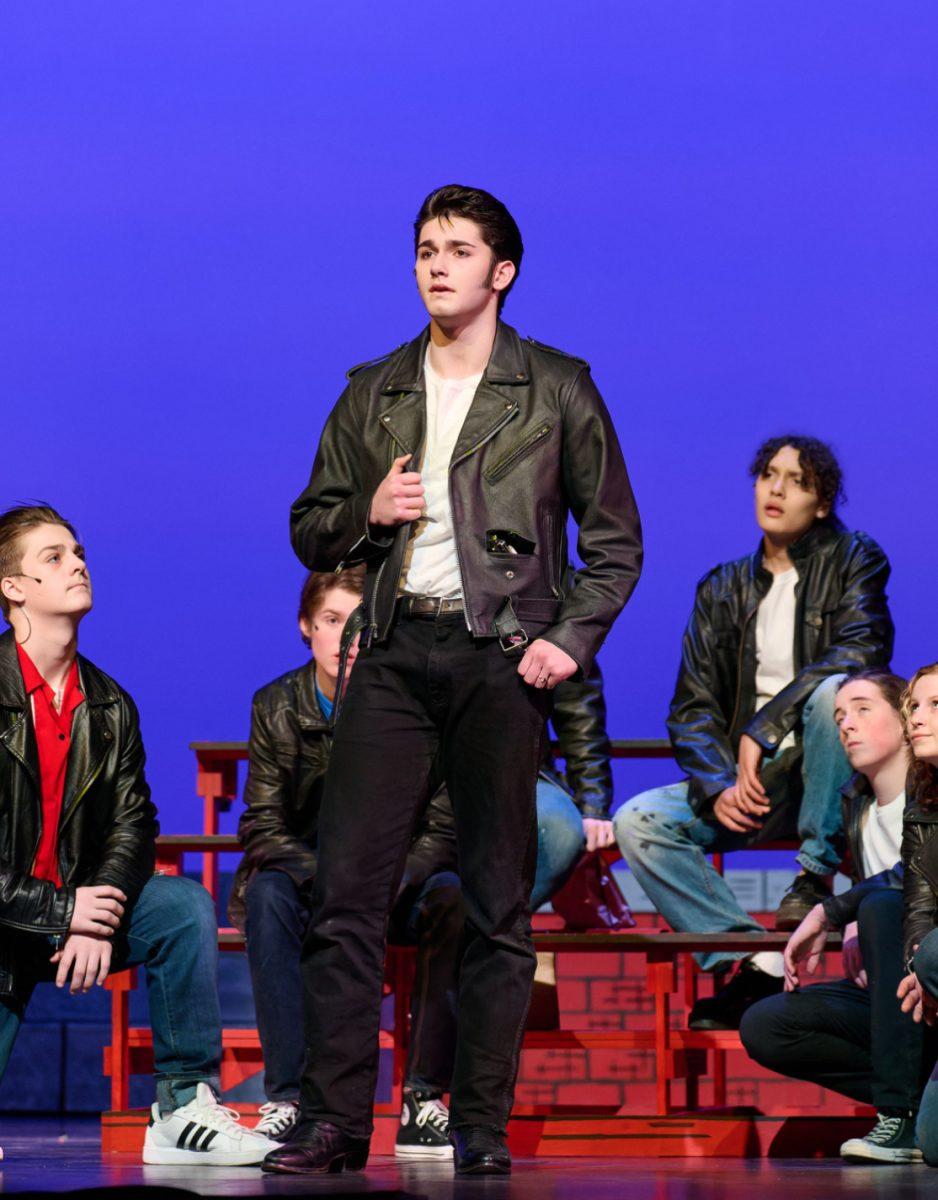“We got our murals … God Bless America; it’s all the same,” Trisha Todd, a Grant High School performing arts teacher, yells from the stage into the empty auditorium. The curtains dance as her voice echoes through all 900 seats. Behind her lie cluttered props stuffed in changing rooms and on the catwalks.
For the auditorium, Grant’s 2017 remodel shepherded in a new age of cramped storage and unusable mechanics due to its lack of practical changes. As the Grant community fought to preserve iconic elements in the auditorium, little was left in the budget for practical investment. “The community wanted this theater to be here and they don’t have to live in it,” says Todd.
As a school with a large performing arts program, Grant is known for having large, sold-out shows, making enough seats essential. Before the remodel, Grant’s auditorium had about 1700 seats. However, the Educational Specifications for Grant initially said that the Grant auditorium would be made smaller and capped at 500 seats due to the smaller space and Americans with Disabilities Act (ADA) requirements. After advocacy from the community and administrators, approximately 900 seats were placed in the auditorium. As the square footage did not expand to match the number of seats, the school had more seats than could comfortably fit in the smaller auditorium. Currently, only about 740 seats can be sold per play due to obstructed sightlines.
John Eisemann, the Grant choir director, mourns the loss of a larger auditorium: “We used to have so many events and that created a much better sense of community at Grant.”
While performing arts teachers regularly spoke to consultants and architects before the renovation, many felt the process was disappointing. Eisemann says, “The district did us a lot of lip service. They didn’t ever intend to really listen to us.” Grant dance teacher Jessica Murray recounts a similar experience: “We were unfortunately shut down and dismissed frequently when we brought up the functionality of the space.”
The preservation of the original auditorium’s nostalgic setting has come with its own set of costs.“It is big and beautiful, but for those of us that work in that space daily, we know the challenges the auditorium holds,” says Murray. “If the modernization team, specifically the project manager and the architects had listened to us during those meetings, we could’ve saved money and a lot of time and frustrations.”
Some of these frustrations include onstage access, instrument transportation and storage. In order to create space for everything, the props and costumes mostly live in cluttered supply closets or crammed into the out-of-use changing rooms. While most auditoriums have immediate access to storage and a scene shop — an auxiliary room to store and work on technical elements of a performance — the Grant auditorium does not. The theater department has a sprawling network of basement closets that hosts hundreds of props and costumes. To move the props up to the auditorium, students need to hope they fit in the elevator or push them up the stairs themselves.
Normally, current props would be housed in the scene shop, but Grant’s is currently shared between woodworking, choir and theater. Half of the room is filled with choir shells (large white screens that reflect sound towards the audience) and current props. “We have two programs that have needs and need to be treated equitably,” says Alex Luboff, Grant’s woodworking teacher.
Another difficulty is the lack of onstage access, an issue felt by many of the performing arts teachers. “We have this $10,000 marimba that literally cannot clear the 180 in that hallway,” says Christopher McCurdy, Grant’s band teacher. Due to lightlocks, painted black hallways that stop light from entering the auditorium, the marimba doesn’t fit inside the theater. McCurdy explains that a typical auditorium has a connected or very closely located band room and a lift gate to hoist wheel-heavy instruments onto the stage. A lift gate is located outside the woodworking room, but the props, large choir shells and narrow doorways block any transportation path. McCurdy and band students are left to lift the instruments onto the stage by hand. “Some of these instruments are incredibly heavy, we’re talking a couple hundred pounds, so there’s an element of student safety to it that needs to be addressed,” McCurdy says. Eisemann also comments on the hardship of carrying heavy equipment: “Rather than spending time teaching music, (it takes) a half of a class period, or more, schlepping risers … all the way down to the auditorium.”
While another remodel may be out of the question, the Grant administration is working to better the performing arts program. Grant Principal James McGee, is currently fundraising with the district for blackout curtains and a box office for next year. “Mr. McGee and Cynthia Roberts, (Grant’s) business manager, have been wonderful helping us to find space, solve problems, fix issues, and compromise,” says Murray. “I am very grateful for their leadership and help in working out viable solutions for the auditorium.”



























